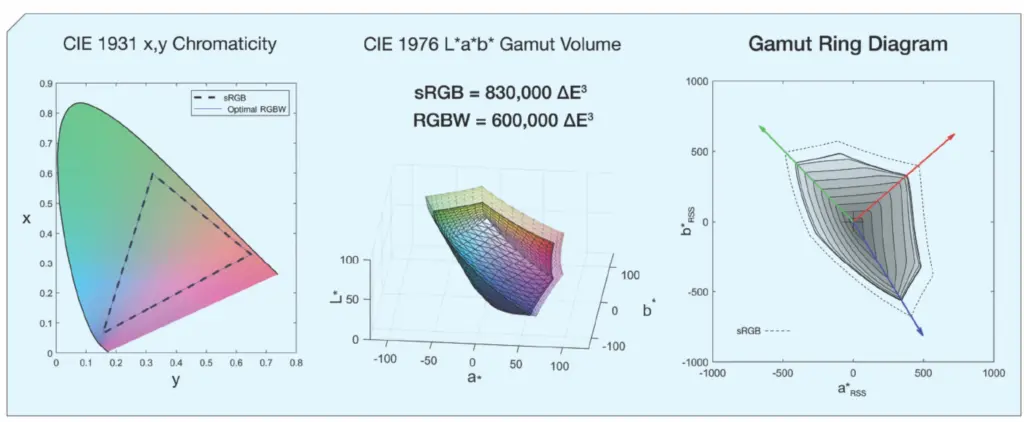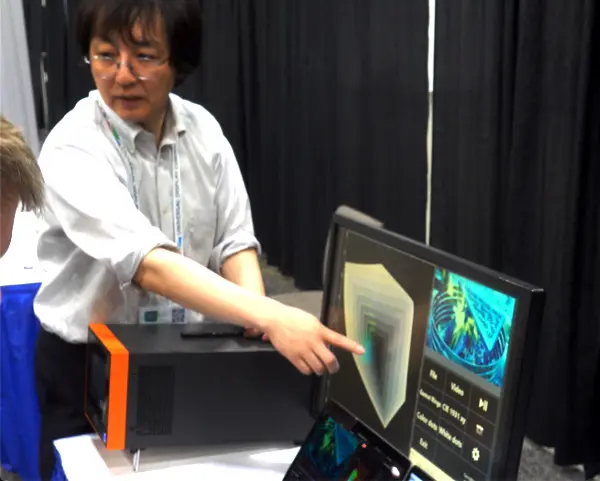One of the less recognised, but vital, parts of the display business, is the ICDM – the International Committee on Display Metrology – the group that collaborates to create the IDMS – the International Display Measurement Standard. The specification is free to download, along with huge numbers of test patterns for use with the standard, from the SID, which has supported the ICDM in recent years.
The original version of the standard was published in 2012 and had a major revision to version 1.1 in 2021 following a big effort by all involved. I wrote about the extension of gamut rings at the time. In May, the ICDM released an updated V1.2 although this is much more like a dot release than V1.1, with mainly corrections and smaller updates and there was less fanfare over the introduction.
More Gamut Ring Developments with ICDM
One of the highlights, to me, of the V1.1 IDMS was the inclusion of ‘gamut rings,’ a way of mapping color performance of displays (which is a 3D phenomenon) to a 2D surface – in the way that the contours on a map can help you understand the landscape with a better sense of its 3D nature than a satellite photograph. So, it was a particular pleasure to meet with Dr Masaoka of NHK in the I-Zone at the recent Display Week 2023 event as he developed the concept of gamut rings.

He explained that he was at the show to meet with others from the ICDM and was in the I-Zone, which enables start-ups, academics and new companies to highlight what they are doing, to talk about two developments in the use of gamut rings.

Dr. Masaoka of NHK at Display Week 2023. (Source: Bob Raikes)
One of the disadvantages of the gamut ring approach is that you need to collect a lot more data points to create the gamut ring chart. The time taken to do this could be a barrier to the adoption of the metric, so Dr Masaoka has developed a measurement system that can perform the full measurement, analysis and creation of the chart in just 60 seconds.
The second development was also very interesting. NHK is, of course, primarily a broadcast organization. In fact, Dr Masaoka was the researcher that did the work that showed that 8K is needed to provide a sense of realism on large displays. So, he was interested in how the concept of gamut rings could also be used to understand video signals as well as display performance.
Scope to Measure Video
When you are editing video using editors such as Davinci Resolve or Adobe Premiere, one way to understand what colours and brightness are in the image is to use ‘scopes’. Editing programmes use different types of scopes to show different views of the image data. The data is important to understand for broadcasters that want to stay inside the ‘legal limits’ for different broadcast systems.

In the image (from Resolve), you can see that one of the scopes that can be shown is a CIE chart. That gives a sense of the chromaticity range but really doesn’t tell the whole story as it doesn’t take into account the luminance of the signal. Dr Masaoka explained that you can use the idea of gamut rings in the same way but with the advantage that it would include an element of luminance. He is developing plug-ins, the first for Resolve, to allow live gamut ring display and told me that he believes that in the future, colorists and graders would like to use the system as it presents so much information in a simple form.
Bob Raikes is semi-retired from the display industry, but still edits the 8K Association newsletter and contributes to Display Daily. He reported from Display Week for Display Daily, the 8K Association and Information Display.

